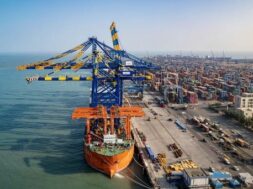
2047: India to be a $34.7 trillion economy, with a per capita income of $21,000
Virendra Pandit
New Delhi: The Indian economy in 2047, when the South Asian country celebrates its Independence from the British Raj, will attain the size of USD 34.7 trillion, with a per capita income of USD 21,000.
Industry body PHD Chamber of Commerce and Industry (PHDCCI) said in a report that the country’s economy is displaying robust growth post-Covid pandemic despite continued global headwinds.
The PHD Research Bureau, PHDCCI, released its report, “Viksit Bharat@2047: A blueprint of micro and macroeconomic dynamics” on Wednesday.
“At a disaggregated level, each sector of India’s economy will bolster the economy on the path to “Viksit Bharat by 2047. For our economy, sectoral value added will be 12 percent of Agriculture, 34 percent of Industry, and 54 percent of Services, with the share of Manufacturing in GDP at 25 percent by 2047,” said Sanjeev Agrawal, President of PHDCCI.
India is poised to become a prominent player in the world economic ecosystem with the size of the semiconductor industry at USD 750 billion, the size of renewable energy at 1500 GW, and the size of the food processing industry at USD 2150 billion by 2047, he said.
“India’s rank will be among the top 5 countries in Government AI Readiness Index, size of exports (merchandise + services) will be USD 10 trillion and India will be among top 5 countries in the Global Innovation Index by 2047,” Agrawal said.
PHDCCI has identified 10 key enablers that are leading the economy to Viksit Bharat by 2047. These include the ease of doing business and reducing the cost of doing business regarding capital, power, logistics, and land.
Special focus should be laid on the development of the semiconductor industry. This will enhance India’s prominence as a leading manufacturer globally, it said adding that continued handholding to the startup ecosystem is critical.
Reform measures for the agriculture and food processing sector should be on a priority basis as this would help India become Viksit Bharat.
Among other enablers are filling the vacant positions at the national and state levels including the judiciary, police, medical and para-medicals, military and para-military and education sector, etc.
“India is adopting modern practices including artificial intelligence (AI), enhancing internet penetration, and world-class logistic techniques among others, Agrawal said.
The share of agriculture in the total gross domestic product (GDP) would come down to 12 percent in FY47 from 20 percent in 2023, while the share of industry would rise from 26 percent to 34 percent during the same period.
The share of the manufacturing sector is projected to grow from 16-25 percent between FY23 and FY47. However, services contribution to total GDP is expected to remain the same, at 54 percent in FY47.
“Going by the growth paradigms and support of the economy, various facilitations, and measures taken by the government, India will be a USD 7 trillion economy by 2030 and USD 34.7 trillion by 2047, “ said S P Sharma, chief economist, PHDCCI.
The life expectancy at birth will grow to 74 years by 2030 and 84 by 2047. It has increased from 63 years in the year 2000 to 67 years in 2021. The availability of hospital beds, which was one per thousand in 2023, will be six per thousand people by 2030 and 12 per thousand people by 2047.
Internet use in India is expected to reach 82 percent by 2047 from 42 percent in 2024, the report noted.
India’s exports will reach USD 10 trillion by 2047 and the contribution of exports to GDP will rise to 30 percent by 2047 from 21 percent in 2023.
“The future holds a promising outlook for India’s export trajectory as the government is proactively implementing reforms, increasing ease of doing business, strengthening supply chains, and becoming increasingly supportive of free trade while the rest of the world is heading toward protectionism,” said the PHDCCI report.
India has recently concluded free trade agreements (FTAs) with the European Union Free Trade Association, following those with Australia and the UAE.
“Measures undertaken by the Government, such as the launch of the National Single-Window system and enhancement in the FDI ceiling through the automatic route, have played a significant role in facilitating investment,” the report said.
The steady share of the services sector in India’s GDP by 2047 at 54 percent, the report said, reflects its growing importance in the economy, driven by structural shifts, changing consumer preferences, technological advancements, and supportive government policies.













